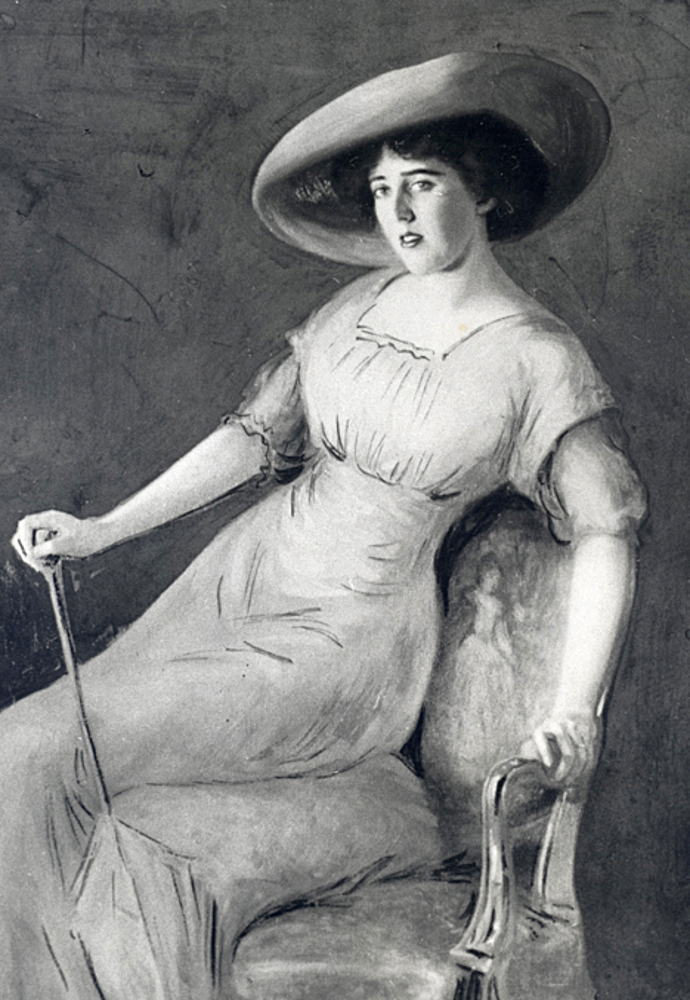Partner
Gwen Le Gallienne
Queer Places:
Cimetière des Gonards, 78000 Versailles, France
 Louise
Bryant (December 5, 1885 – January 6, 1936) was an American feminist,
political activist, and journalist best known for her sympathetic coverage
of Russia and the Bolsheviks during the Russian Revolution. She is
connected with Catherine
Breshkovsky and the Mother Earth magazine (1906-1917). She wrote a book on the U.S.S.R. claiming anarchists had “nationalized women,” to
Emma Goldman’s great annoyance. She corresponded with
Goldman in U.S.S.R. Goldman comforted her after the death of her partner Jack Reed.
Louise
Bryant (December 5, 1885 – January 6, 1936) was an American feminist,
political activist, and journalist best known for her sympathetic coverage
of Russia and the Bolsheviks during the Russian Revolution. She is
connected with Catherine
Breshkovsky and the Mother Earth magazine (1906-1917). She wrote a book on the U.S.S.R. claiming anarchists had “nationalized women,” to
Emma Goldman’s great annoyance. She corresponded with
Goldman in U.S.S.R. Goldman comforted her after the death of her partner Jack Reed.
Bryant, who
married fellow journalist John Reed (her second husband) in 1916, wrote
about Russian leaders such as Katherine Breshkovsky,
Maria Spiridonova,
Alexander Kerensky, Vladimir Lenin, and Leon Trotsky. Her news stories,
distributed by Hearst during and after her trips to Petrograd and Moscow,
appeared in newspapers across the United States and Canada in the years
immediately following World War I. A collection of articles from her first
trip was published in 1918 as Six Red Months in Russia.. Over the next year,
she defended the revolution in testimony before the Overman Committee, a
Senate subcommittee established to investigate Bolshevik influence in the
United States. Later in 1919, she undertook a nationwide speaking tour to
encourage public support of the Bolsheviks and to denounce armed U.S.
intervention in Russia.
Born Anna Louise Mohan, as a young girl she began using the last name
of her stepfather, Sheridan Bryant, in preference to that of her father.
She grew up in rural Nevada and attended the University of Nevada in Reno
and the University of Oregon in Eugene, graduating with a degree in
history in 1909. Pursuing a career in journalism, she became society
editor of the Spectator a and
freelanced for The Oregonian, newspapers in Portland, Oregon.
During her years in that city (1909–1915), she became active in the
women's suffrage movement. Leaving her first husband in 1915 to follow
Reed to Greenwich Village, she formed friendships with leading feminists
of the day, some of whom she met through Reed's associates at publications
such as The Masses; ; at meetings of a women's group, Heterodoxy; and
through work with the Provincetown Players. During a National Woman's
Party suffrage rally in Washington, D.C., in 1919, she was arrested and
spent three days in jail. Both she and Reed took lovers outside marriage;
during her Greenwich Village years (1916–1920) for her these included the
playwright Eugene O'Neill and the painter Andrew Dasburg.
After Reed's death from typhus in 1920, Bryant continued to write for
Hearst about Russia and also about Turkey, Hungary, Greece, Italy, and
other countries in Europe and the Middle East. Some articles from this
period were collected in 1923 under the title Mirrors of Moscow.. Later that year she married William C.
Bullitt, Jr., with whom she had her only child, Anne, the following year.
Suffering in her later years from the rare and painful disorder adiposis
dolorosa, Bryant did little writing or publishing in her last decade, and
drank heavily.
On 28th September, 1929, Bullitt discovered letters that indicated that
Bryant was having a sexual relationship with the sculptor
Gwen Le Gallienne.. When confronted with this information, Bryant
attempted suicide by taking an overdose of sleeping pills and was admitted
to the Neurological Institute of New York. Soon afterwards Bullitt
obtained a divorce and gained custody over his daughter, Anne Moen
Bullitt, following his testimony that his wife was having a lesbian
relationship with Gallienne.
Bryant died on January 6, 1936, of a brain hemorrhage in Sèvres, in the
suburbs of Paris,
and is buried in Cimetière des Gonards in Versailles.[110]
In 1998, three volunteers from the Oregon Cultural Heritage Commission
went to Paris to find the grave, which they discovered was crumbling,
undated, and scheduled for removal. Through the commission's efforts as
well as donations, including some from relatives of Bryant and Bullitt,
the grave was restored.[110]
The Bryant–Reed story is told in the 1981 film Reds, starring
Diane Keaton as Bryant and Warren Beatty as Reed.[111]
Supporting actors include Jack Nicholson as Eugene O'Neill, Maureen
Stapleton as
Emma Goldman, Jerzy Kosiński as Grigory Zinoviev (one of the Bolshevik
leaders), and Edward Herrmann as Max Eastman.[112]
My published books:


BACK TO HOME PAGE

- https://en.wikipedia.org/wiki/Louise_Bryant
 Louise
Bryant (December 5, 1885 – January 6, 1936) was an American feminist,
political activist, and journalist best known for her sympathetic coverage
of Russia and the Bolsheviks during the Russian Revolution. She is
connected with Catherine
Breshkovsky and the Mother Earth magazine (1906-1917). She wrote a book on the U.S.S.R. claiming anarchists had “nationalized women,” to
Emma Goldman’s great annoyance. She corresponded with
Goldman in U.S.S.R. Goldman comforted her after the death of her partner Jack Reed.
Louise
Bryant (December 5, 1885 – January 6, 1936) was an American feminist,
political activist, and journalist best known for her sympathetic coverage
of Russia and the Bolsheviks during the Russian Revolution. She is
connected with Catherine
Breshkovsky and the Mother Earth magazine (1906-1917). She wrote a book on the U.S.S.R. claiming anarchists had “nationalized women,” to
Emma Goldman’s great annoyance. She corresponded with
Goldman in U.S.S.R. Goldman comforted her after the death of her partner Jack Reed.
